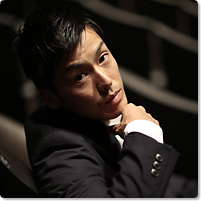Noism, Japan’s only theater resident dance company
- This year (2014) marks the tenth anniversary of the founding of Noism. We at Performing Arts Network Japan did an interview with you at the time of that founding. Could we begin by asking you to look back at that time?
-
Originally, I was asked to be the artistic director of Ryutopia, but I felt that simply being an artistic director in name would be meaningless, so I told them that if I were going to move to Niigata, I wanted them to establish a resident dance company at the Ryutopia theater that was properly employed so that we could concentrate full-time working as dance artists. If I were to become an artistic director and receive public financing as such, I believed it would be my responsibility to create professional-quality works. And, I believed that in order to do that it would be absolutely necessary to create the kind environment (infrastructure, etc.) where we could concentrate fully on dance and achieve a professional level of physical excellence. Where I worked in Europe for a long time, this is considered common knowledge and common practice, but in Japan, this was to be the first such case, and I am very grateful to the city of Niigata for agreeing to accept my plan. In particular, I have no end of gratitude for the Ryutopia project chief at the time, Masaharu Tashiro san. Nonetheless, for both Niigata city and myself, we were undertaking something that had not been done before, so there were inevitably some difficult negotiations that had to be done. My initial contract was for three years, so at first I started out not knowing if my contract would be renewed after those three years. However, it was renewed each time and we have managed to continue through the negotiations of each renewal and make it this far. But, we can’t take things for granted even now, because the fact remains that Noism is still the only resident dance company of any public theater in Japan, and I feel that this is very unfortunate.
- From the beginning you and others have been saying that they hope there would be other companies following Noism’s example. Why do you think that has not happened?
- There are some practical obstacles, but first of all I believe that there has been a lack of concern for this issue among the choreographers and dance artists themselves. In the past ten years, I have been suggesting to all the choreographers I meet that they begin working to form a public company. Artists in the generation of Ryohei Kondo and Kim Itoh and artists of the next generation like Ikuyo Kuroda all have been active with companies of their own, but they never decided to establish a resident company with a theater. And, the generation after them want first of all to be able to create works freely and as they please, and the desire to work faithfully under the direction of a choreographer to refine one’s skills and diligently work to create works has been lost. Since the theater laws were created and the opportunity arose to create resident companies, there were perhaps artists in theater who stepped forward to take that opportunity, but were there any in dance who have? And, if they have, I am worried about whether or not they have the words to put their intentions in a cultural context and justify them articulately.
- In Japan’s contemporary dance world, it seems that many artists are allergic to things like association and organizations, and the desire to work freely and unencumbered seems very strong, indeed.
- During these ten years I have become deeply aware of the fact that the choreographers and dance artists have to take a stance as cultural figures and tell the people in the political system that they have to budget more funding for the arts and culture. At first that effort was bothersome for me as well, but I believe now that nothing will change unless we take the initiative to study the situation and voice our opinions. No matter where you go in the world today, there is no place where artists can simply concentrate on creating good works in hopes that someone will come along and say, “I will give you all the funding you want to continue creating.” No matter where you go in the world, artists have to fight to establish their own place where they can work creatively. Of course, be it in Niigata or in any other part of Japan, both the artists and people in government have the same desire to do something for their community and the country, so we are not enemies. But, we will never make any progress unless we are willing to negotiate and take the time to learn about each other.
- An artistic director has responsibilities both as an artist and as a manager. In your case does that position cause conflicts or frustrations within yourself?
- Within myself, I am able to keep the two responsibilities separate. However, it is not because I take a different approach to the two responsibilities. Rather, it is because I am aware that the conflicts of interest between the two positions also serve as a positive stimulus for both sides. And, also because, when a decision has to be made, it is possible to reach an understanding and awareness of what position is being taken in that decision. What’s more, I am not working as an artistic director in order to put myself in an ideal position to work as an artist. Rather, I am doing it because I want to be in a position to think about the bigger issues of theater culture in Japan. To me, understanding the political side and creating art that has international value are inseparable sides of the same coin. For this reason, I will truly welcome anyone who wants to create resident dance company at a theater, and I hope that anyone with that desire will come to me for advice and information.
- It has been said in the past that one of the reasons for creating resident dance companies is that it is important to be working in a place where a base of creative energy has already been built up.
- Yes. It is definitely important to be able to work and sweat today in the same place that you did yesterday, and with the same group of people. I would go on to say that it is ideal to be able to begin working on your next work in the same place where you have poured your energy into the creation of your last work. Dance artists who tear up the linoleum they have laid on the floor and move with a sense of it like skin, will inevitably have a different sense. Although Noism is a resident company, we don’t have a monopoly on our practice studio space, and when we go on tour we usually have to rent a venue. Still, during the creative process, it is important to be able to spend a number of months working in the same studio with priority access. However, today the environment for this type of group activity is breaking down, and I believe that it is meaningful and valuable from a societal standpoint to have people involved in the arts and culture ringing the alarm bell and telling people about what we are in danger of losing.
- In Japan’s contemporary dance world it is common for artists to create works while moving from one studio facility to another like nomads, and it may be that most of these artists aren’t even aware of the importance of continuing to work in one place.
- Indeed, many dance artists do create works while moving from one public facility, etc., to another. One of the reasons that I have created a program for inviting outside choreographers of my generation who have been working in Japan to choreograph pieces for Noism is because I want them to experience how advantageous it can be to work in well-provided environment that a resident theater company like ours enjoys and have that experience inspire them to begin working toward establishing such an environment of their own. In the end, however, it seems that this message has not been communicated successfully. The message I want to communicate is that, by working independently in that way with whatever conditions you can put together on a one-time basis, you may be able to escape the bothersome aspects of having to work collectively, but in the end, nothing will remain, and nothing will be passed on. If you believe that what you are doing is serving a bigger purpose, you will be able to endure hardships that you would not want to endure if you were working only in your own interest. And, I believe that the lack of awareness of this fact is what makes young people today unable to endure difficulties.
None of our Noism works are ones that were created with ease, but at the same time, there have been no works that we took into the opening performance with the feeling that we haven’t achieved what we set out to do. Having this environment where we are able to work full-time every day on our art has been absolutely essential, for the sake of enabling the dancers of our company to practice and prepare themselves fully, for the sake of raising the artistic level of our works and also for the purpose of creating art and culture in one regional city of Japan that we can take on to the world stage with pride and confidence. My ongoing hope is that other dance artists and people involved in arts policy will realize this as soon as possible.
10th Anniversary “theatrical dance” production Carmen
- For Noism’s 10th anniversary production you did a large-scale production of Carmen . It was staged under the new title of “Theatrical Dance” and performed by the dancers of Noism 1 and your trainee company Noism 2 together.
- For this production I returned to the original novel by Mérimée that has inspired the famous opera and ballet versions of Carmen in order to create what I consider to be a Carmen different from anything before. It was a first attempt by me to use a narration along with dance, calling in the SPAC actor Akihito Okuno as a professional narrator, and the result brought mixed reviews.
- Okuno san appeared in the role of Mérimée and tells the story of Carmen as narrator. The story of Carmen and Michaela is depicted in intense dance scenes, after which the narrator himself is brought into the story, with the result that one might feel it is all a bit too much (laughs), with its multi-layered development.
- Yes, that is true (laughs). We received comments from some saying that it made it very easy to get into the story, while others said, as you just mentioned, that perhaps too much use was made of the original text. With each successive performance the scenes have been modified and refined, thus gradually changing the work, and if I may comment as the creator, I believe that what now may be considered “overdone” will in ten years be the norm. If you only provide things that seem just right to today’s audiences, you will never create works that go beyond those of the past. In short, what I want to create is not dance works but performance art that is composite art and will eventually stand as representative of the theater culture of this country in the 21st century.
- One of those efforts is your series of dance works with narrative aspects that you call “Theatrical Dance,” isn’t it? The first of these was your 2010 work Hoffmann Monogatari (Les Contes d’Hoffmann) performed by Noism 1 and Noism 2 together. And, you also started another type with your “ Misemono-goya ” (small show tent) series begun in 2008 using small theater spaces.
-
Recently I have taken a position as an international committee member of the BeSeTo theater festival and some people have been asking me if it is theater that I want to do (laughs), but from the standpoint of performing arts, there is really no reason to separate dance and theater. I originally studied with Maurice Béjart in an environment where I would suddenly be asked to deliver spoken lines in French in dance performances. Of course I believe in the potential of dance and other non-verbal arts, but that is in no way a reason to deny the use of words completely. However, if you are going to words on stage that should involve professional expertise in that area. In other words, there should be directorial considerations concerning the delivery of the lines or narrative, and most of all, the appropriate physical training is essential. That is why in our production of
Carmen
, I brought in an actor with professional skills in narration rather than simply having the dancers speak lines as we are often seeing in contemporary pieces today. As for our “small show tent series,” I wanted to create small works for small spaces where we would be performing close to the audience. Concerning our “Theatrical Dance” works, I still don’t have any clear definition of what it is, but the important thing for me is that, at least, I want to do productions based on original scripts that write and communicate a story with clarity and certainty. But, this doesn’t mean that I only want to rely on the easy clarity of narration. As an artistic director I am concerned about forms of expression that will be more widely accepted, but when it comes to creation I separate that concern and do things completely as I feel I must according to my beliefs regarding the performing arts. Then, as an artistic director I think about how to open up performing arts so they can be received by the society.
Ten years of evolution in Noism – Building the professional dancer’s body with “Noism Ballet” and the “Noism Method”
- Looking back over these ten years, have there been changes in your creative method and your works?
- There probably have been. But, the important thing isn’t that I have pursued a Kanamori art but the fact that I have pursued the creation of works within the process of the company Noism’s artistic activities. That means I have been pursuing with the company Noism a number of possibilities of theater culture. This has been an unwavering stance and I firmly believe that the true value of these activities will be communicated someday.
- Looking back on the ten years of Noism activities, do see any clear results?
- One big thing is that we have established the Noism training method. This is something we have been able to achieve because we have had an environment where we can spend the time it takes to do consistent and meaningful practice. In my body I have the basic training background of classic ballet, and when I was working overseas, no matter how far the dance forms of the companies I danced with were from ballet, I always had ballet lessons every morning. However, since entering the 21st century, ballet classes seem to be teaching a broken-down parts of ballet that are in line with the contemporary the dancers are normally doing. What’s more, it is not really a form of training but little more than a warming-up session, and there are an increasing number of dancers who don’t even do that. That means that the discipline of the companies is breaking down. I believe this is one of the reasons we are seeing a decline in the ballet companies of Europe.
- Do you mean that the physical training of dancers is breaking down?
- Yes. That is why I believe that theater resident dance companies of the 21st century have to reconsider their programs beginning with the dancers’ daily morning training, and I have been pursuing that direction. What I have done is to take my ten years of experience dancing in the West and ten years of activities here in Japan fused that into my own physical theory that I have then used as a base to develop a two-pronged approach to physical training for the Japanese body that we call the “Noism Method” and Noism Ballet.”
- In practical terms, what do the Noism Method and Noism Ballet training consist of?
- For example, the mind that classic ballet is based on is “moving upward, and upward” in the vertical dimension. But, the orientation in Noism Ballet is “upward and downward” with the body positioned in between the two with a consciousness on the vertical axis. In the Noism Method we begin with lying on the floor with a consciousness of the horizontal axis based on an awareness of the pubic bone and the sacral bone. The idea is that if you can find the horizontal the vertical will spring naturally and intuitively from that. In this way, we place importance not on upward or downward but on the physical tension that exists in a body that is neither vertical nor horizontal but somewhere in between the two.
- So, this is the idea in terms of the vertical axis and the horizontal axis?
- The thing that dancers whose training lies originally in the ballet tradition have the most difficulty with when dancing in contemporary works is the relationship with, or the sense of, the floor. However, moving from the lying position is something that we all do every morning when we wake up, isn’t it? Since ballet is based of unique forms and movements that are uncommon to daily life, it is not making use of the physical sensibilities of daily life. This is something that was necessary to make ballet an art that is removed or detached from daily life and its realities. However, ballet choreography since the 20th century has had to deal with the sense of or relationship with the floor and the complex sensibilities regarding gravity. For this reason, I believe it is natural that ballet should now need to develop new training methods. Well, this is a line of reasoning that we take into consideration when we base Noism dance on the Noism Method that goes from the horizontal to the vertical and Noism Ballet that stresses an awareness of gravity as one of the basic elements. By the way, the members of our Noism 2 trainee company always do the Noism Method every morning from 9:30 to 10:15. The Noism 1 members are free to join in this session or not, but they all participate along with the Noism 2 members in the Noism Ballet session that follows from 10:30. Once every two weeks, I personally lead all the members of both companies in a Noism Method session. And in fact, I am planning to include this practice in our next new work.
- It is indeed interesting that you would make the basic training vehicles of the Noism Method and Noism Ballet the subjects of dance pieces.
- I thought to make works based on two of them the call them the “Training Pieces.” I thought it would be good if I could show new possibilities with a form of Eastern ballet that wasn’t a product of the West.
- How do the Noism Method and Noism Ballet function to change the dancer’s body?
- It becomes a fit and firm, well-trained body, and a body with a positive sense of tension. Because it is based not on the idea of moving with the least possible applied strength with regard to a single-directional force, but rather on the idea of movement born of an awareness of multi-directional forces. I often use the word kikko (contention, competition), and when you think a pose or form that you have taken in dance not simple as the stopping of the flow of movement but as two or more flows of movement opposing or competing against each other within the body to create that pose or form, a positive (kinetic) sense of tension is born. Many ballet instructors in the West speak of a pose or form as the result of creating a spiral of energy within the body, and in this way they seek to have the body become aware of a sort of grand-scale theory. However, instructors in Japan don’t understand the essences involved and try to get the dancer to create forms that appear beautiful from the outside but remain empty on the inside. People who have learned that kind of ballet can use our method to regain a fit and firm, well-trained body. And, another important thing is that dancers, especially male dancers, who have not trained themselves with the kind of clearly defined forms (and conventions) that ballet has can use the Noism training to attain the desired body lines (ability to form proper lines with the body).
- This is the “the body of a professional dancer” that you often talk about, isn’t it?
-
Since entering the 21st century, the kind of diversity in physical expression that is sought today has led to increasing numbers of “untrained, flaccid bodies” among dancers in the contemporary dance world. In a number of ways, it has become easier to be a dancer. I don’t intend to negate this trend completely, but at least in our case, we have always sought the kind of fit and firm body that can not be attained without daily discipline and training, and the kind of dance that can only be realized by the type of professional body that has strength and energy deriving from precise and strong control. And, this is something that could only have been achieved because of the positive environment, facilities and time we have had here in Niigata for the last ten years.
The birth of Noism 2 and expansion of activities
- Of the many achievement by Noism over the years, I feel that the birth of the trainee company Noism 2 is an especially import one. With public companies overseas, their educational programs involving dance schools and companies for young dancers are an integral part of their activities. These programs enable many people to study and broaden and strengthen the dance base in their communities.
-
That is true. The need for such programs is clear, but it wasn’t easy for us to convince the city of Niigata of this need. And, if we had not succeeded in establishing Noism 2, I think I might well have my Noism activities in 2010. We were able to get the absolute minimum support necessary to establish the new company, such as funds for renting studio space and hiring the necessary help, but we had to start out with a deficit of budget funding. From the standpoint of our staff, it became a process of taking on twice the work load while keeping our budget at the same level, so I really appreciate the efforts they have made and the hardships they have endures. When we say there is something new that we want to undertake like this, the city government officials do not readily give the OK, but by negotiating long and hard we were able to get to the point where they said, “OK, go ahead, as long as you keep within your budget.” However, while knowing that there would be no real progress until we could get the necessary additional budget, we went ahead and started the company with the minimal resources we had and then entered the next stage of negotiation, saying, “Look how much we are doing. We want you to give us more budget so that we can continue.” Then, if that doesn’t work, we simply have to give up. In the end it comes down to a matter of sincerity and winning good faith.
- Many of your Noism 1 members eventually go independent, so the education and training of the next generation of young dancers is an important issue, isn’t it?
- Yes, it is. The duration of a dance artist’s active career is not long, so many feel anxious and before they are actually accomplished enough, they feel that they have to make their move [to independent artistic activities] now before it is too late. I understand that feeling well, but I am also concerned by the question of what they will do in the long term, after their initial period of [independent] success.
Many of the female dance artists in Noism 2 reach a high level of practical dance skill and mental strength so we can give them positions as full members of Noism 1. In contrast, since there are fewer male dancers to begin with, they can easily get invitations to perform [with other companies] after reaching a certain level of proficiency in dance. So, there are very few male dancers who are will to make the great effort required to really train themselves to a higher level. However, we find that there are many good [male] dance artists coming out of Taiwan, and we had about six applying this year for our Noism 1 auditions. These dancers get a good dance foundation studying at university, so they come to us with a higher level of accomplishment. What’s more, some of them were inspired by our performances of NINA in Taiwan in 2009 when they were middle school students and have now come with the desire to dance with Noism that we can clearly feel. There may actually be a day in the future when Noism 1 is a company of Taiwanese male dancers and Japanese female dancers.- In overseas dance companies as well, they are almost none that are able to get by with only dancers from their own country. When the Asian dance market begins to reach this level of development, that kind of internationalization will probably become commonplace. By the way, could you tell us what the present budget is for Noism?
- At the time we were newly established, that information wasn’t made public, but the official budget that was announced two years after our launch was 50 million yen in funding from Niigata City (foundation), and the figure didn’t change after that. Since we now have Noism 2 and other projects, we negotiated hard last year and managed to get an additional eight million starting from this April (2014). However, since Ryutopia has theater, music and dance departments, this [budgeting] problem is not something that can be settled exclusively for the dance department.
- What are the actual activities you engage in with this budget?
- Noism 1 operates on the ideal of creating performance art in Niigata that can be taken to the world stage with pride and confidence, and under that policy we basically create one or two productions each year. However, as our repertoire increases, it is important both for our dance artists and for our audience that we do repeat performances of past works, so in the last few years, one of the two productions each year tends to be a repeat productions. In the period just after Noism 2 was launched, I worked as artistic director for both companies, which made it difficult for me to give full attention to either. But, from 2013, we now have Yuki Yamada as the resident choreographer for Noism 2 and we are finally able to begin expanding our outreach programs for the Niigata communities. From last year we have added a special summer performance program to our regular spring performance program and we have begun to participate in a number of the city’s municipal events as Niigata’s municipal dance company. And, going forward, I want us to increase the number of school performances we do.
- That means you are developing increased tie-ups with Niigata’s municipal programs?
- Yes. In short, we have developed relationships so that Noism is functioning not simply as one of the Ryutopia theater’s programs but on a larger scale as a part of Niigata city’s overall arts and culture policy programs. And this is a very important change, because in the past when a school wanted to have us come and perform, the plan would often get lost in the discussions about whether the cost of the performance would be paid by the theater or the Board of Education and never be realized as a result. Whenever that happened, I would say repeatedly that it is important for us to be showing quality performances to the children most of all. Because Noism is a form of culture that has been established with taxpayers money, I have repeatedly said that we have to return something to the taxpaying citizens, and pleaded for the city to provide funding for performances as part of the city’s arts and culture policy programs. Finally, from this season we have been able to get city funding for these programs, so I believe we will now be able to expand our activities in this direction. To people who may be establishing resident companies like ours in other regions, I recommend that they make their position as part of the city’s arts and culture policy programs clear from the beginning. This will enable them to plan activities from a larger perspective, instead of having to battle with other departments for portions of the limited theater budget each time.
Currently, Noism has an established audience of about 1,500 in Niigata. We have many repeaters and people see us as their own company. On our side, we are taking measures like lowering the cost of tickets in order to make it easier for them to come to performance. In the future, I want to see people who saw Noism performances as a child grow up and become parents who will say to their own children, “Let’s go see [Noism’s] Carmen like I did when I was in elementary school.”- That connects to the “Theater Culture 100-year Vision” that you often talk about.
- Yes. It is a vision of creating theater culture from a 100-year perspective, which means basically a “three generation culture vision.” As an artist, I can only be fully active for about 30 years, and if I can’t pass on the results of my efforts to the next generation of artists within that time, I don’t think it can really be called culture. If Niigata is truly aiming to produce world-class performing arts culture programs, it will have to create a performing arts school that attracts dance artists from around the world to study here. Then the people who have studied here will go out into the world and be successful, while here at home we have a securely established dance company environment that can produce high-quality work and retired dancers can then become local instructors. This is the kind of lifetime image of a dance artist that people have to be able to visualize in order to pursue that life as an artist. I want to work now to lay down the rails that people will be able to ride on as a lifetime artist.
The tasks of the next ten years aimed at establishing theater culture
- We hear that you are also planning a festival in Niigata.
- The choreographers of my generation that I met when I was working in Europe are now active on the cutting edge of dance, and if I could invite them here to Niigata we could have a festival that is different from the established festivals with programs full of the big figures of the 20th century. And that is a challenge I would like to undertake. I am now on the committee of the BeSeTo festival and I hope that my presence there will open up more possibilities in dance and productive new relationships and connections will be born for us.
- This may sound a bit negative to bring up here, but I would like to ask your opinion about the recent trend in Europe that is making it difficult to maintain a [dance] company. Even artists whose work is recognized internationally are being driven out and creation is shifting from companies to small and middle-sized productions that are able to bring together popular individual artists. In light of this trend, what are your thoughts about the significance of a company like Noism?
- I believe that for this very reason it is a good time to look to Asia. Europe and other areas like it are indeed in the state you describe and the performing arts are drifting toward a consumer market state. Japan has a long history of following and trying to catch up with Europe, but before catching up, Europe has begun to change. But, that doesn’t mean we should abandon what we have done until now, rather, I feel this a chance to look on them at masked teachers now and begin to create things that are unique to Japan and to Asia. In terms of theater facilities, Japan now has many wonderful facilities that even Europe rarely has, so the problem now is what we present in them and how we use them. Japan has been building an infrastructure that even Europe will be jealous of.
- You have long years of experience overseas, so you know both the good and bad sides of Europe.
- Yes. In Sweden for example, you only have to be active for three years before you can get a lifetime employment contract. After you get that contract you can take four months of vacation each year, and even if you don’t do much work, you can’t be fired. That kind of full social insurance can function adversely to turn artists lazy. There are a number of problems like this. Even for an artist like Forsythe, I feel that it must not be very interesting for him to choreograph for today’s dance artists. In the past, he had his dancers attempt movement that was at the very edge of human capability and experimental in nature, and people thought it was fascinating. But now, everyone is used to his style and they can dance his works easily, so there is none of the edgy excitement it once had. If that was the case it turned out to be better to not have the dancers doing anything choreographed, so the works went in the direction of not choreographing and dancers not moving. I believe that as an artist you cannot continue on like that. This is not only true of Forsythe but of Europe as a whole.
- The other day I spoke with Philippe Decoufle and he said that he had restaged a work from 30 years ago with revised choreography but, even though the dancers had the skills, it was no longer interesting as dance and difficult for him to stage.
- I know what he means. And that is the reason I feel that by maintaining a strong [physical and technical] base with our Noism company, we can reclaim some of the core essence that is being lost in European performing arts. And, it is interesting that when we do this, it brings us to questions of what is Japan, and what is Asia. That is then reflected in our works and we hear comments like, “That has a Butoh orientation,” or, “That is very Asian,” but it is actually something much bigger than that. When we speak of Asia, it was originally everything that was east of Mesopotamia in what is today eastern Iraq. It is important to go back several thousand years and think about what the Asian body [physicality] was then. If there is something that is inherently Japanese, it is not an adornment that you put on but something that wells up naturally from within you.
- Going forward, you may have the opportunity to work as an artistic director or festival director in other Asian countries, I would imagine.
- And the reverse may also be true. In short, while Japanese directors are just watching the scene, capable Asian artists may exert a big influence on Japanese theaters and get them to create the next resident company like Noism (laughs). In the past ten years I have learned that if you don’t speak out with conviction nothing will change, and I believe that if the artists themselves make the effort to understand arts and culture policy-making and then participate and speak out, things will change. The next ten years will surely be the time when this challenge will be played out. I will continue on with this challenge with my sights on theater culture 100 years from now.
Noism history
2004
SHIKAKU , black ice
2005
no-mad-ic project – 7fragments in memory (ver.Noism05) , Triple Bill , NINA – materialize sacrifice
2006
sense-datum , TRIPLE VISION
2007
PLAY 2 PLAY – interfering dimension , W-view
2008
Nameless Hands – A Doll’s House , NINA – Materialize Sacrifice (ver.black)
2009
Noism 2 was established. ZONE – shimmer / thunder / moon on the water , Nameless Poison – The Black Monk
2010
“Theatrical dance” production Les Contes d’Hoffmann (Noism1 & Noism2)
2011
OTHERLAND , Miraculous Mandarin , Bluebeard’s Castle
2012
solo for 2 , Nameless Voice – Garden of Water, House of sand
2013
ZAZA
2014
“Theatrical dance” production Carmen (Noism1 & Noism2)
https://noism.jp/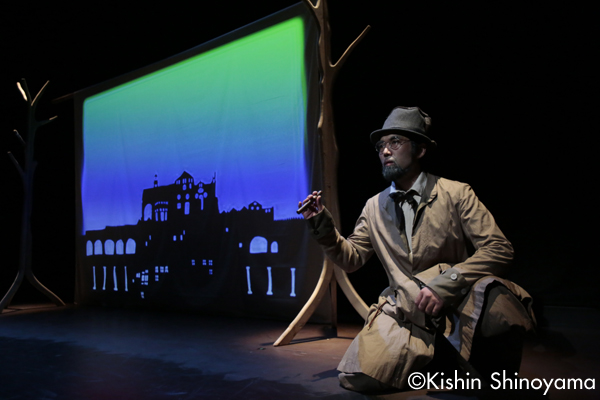
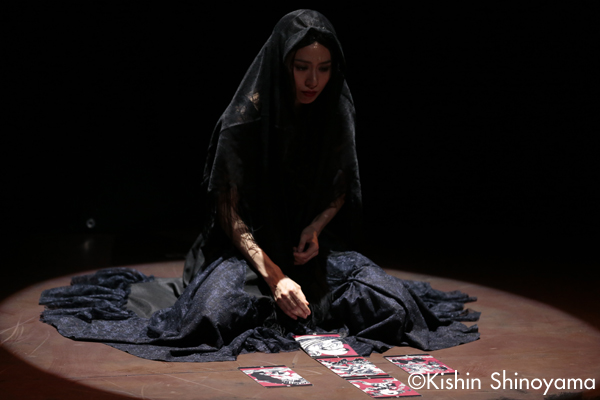
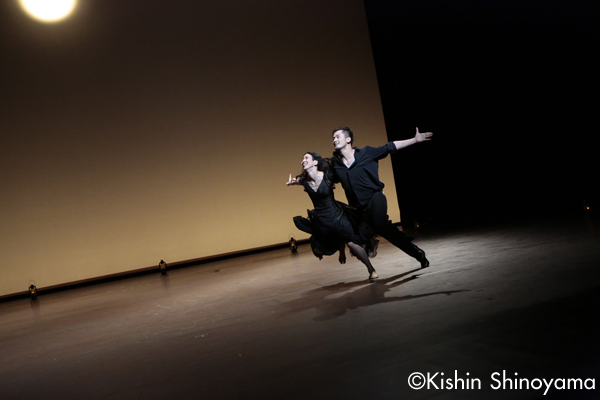
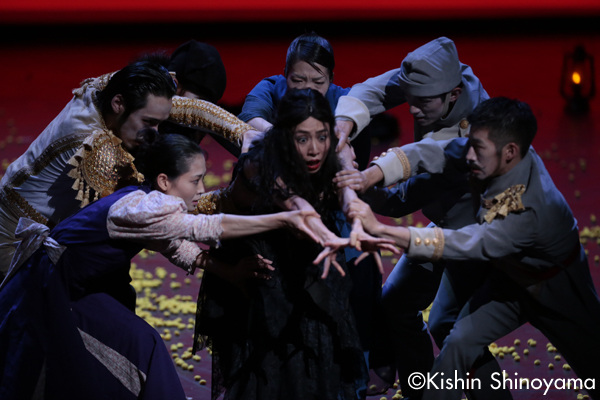
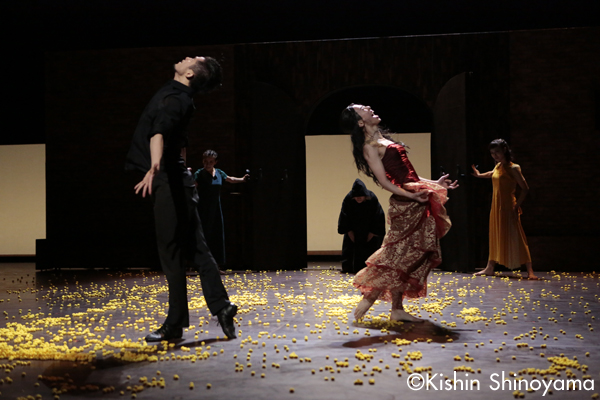
Noism1and Noism2
“theatrical dance” production
Carmen
(2014年)
Photo: Kishin Shinoyama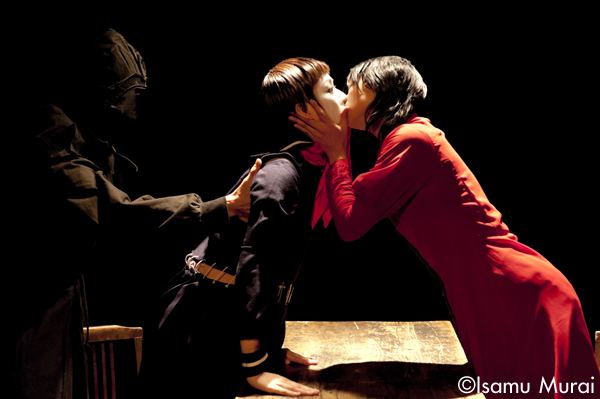
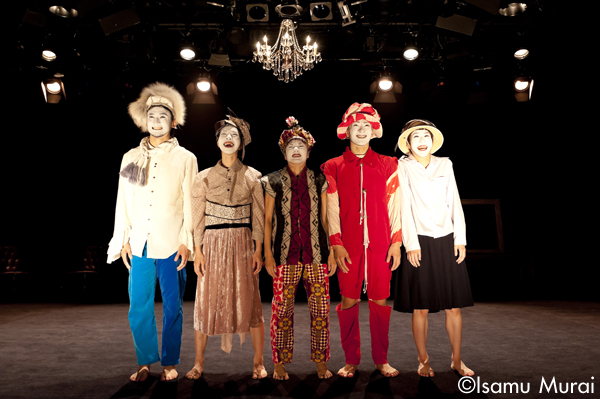
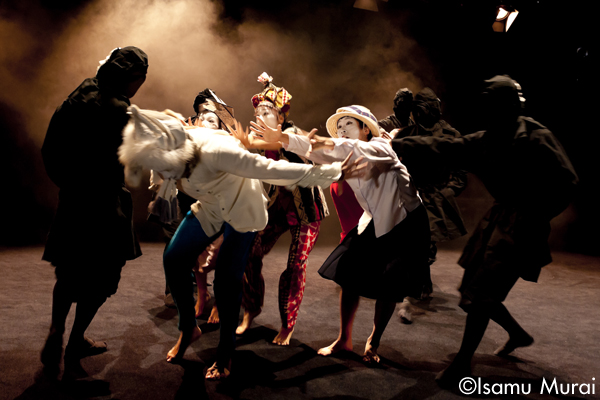
Show-Tent Series 1st production
Namaless Hands – A Doll’s House
(restage, 2011)
Photo: Isamu Murai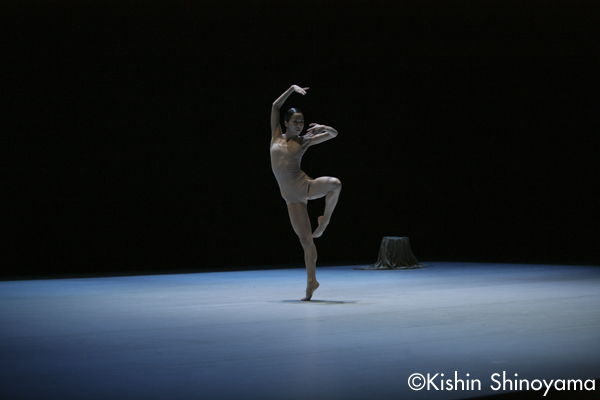
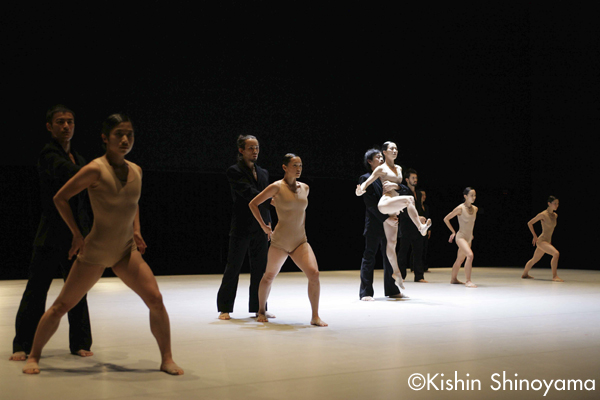
NINA – Materialize Sacrifice
(2005年)
Photo: Kishin Shinoyama


